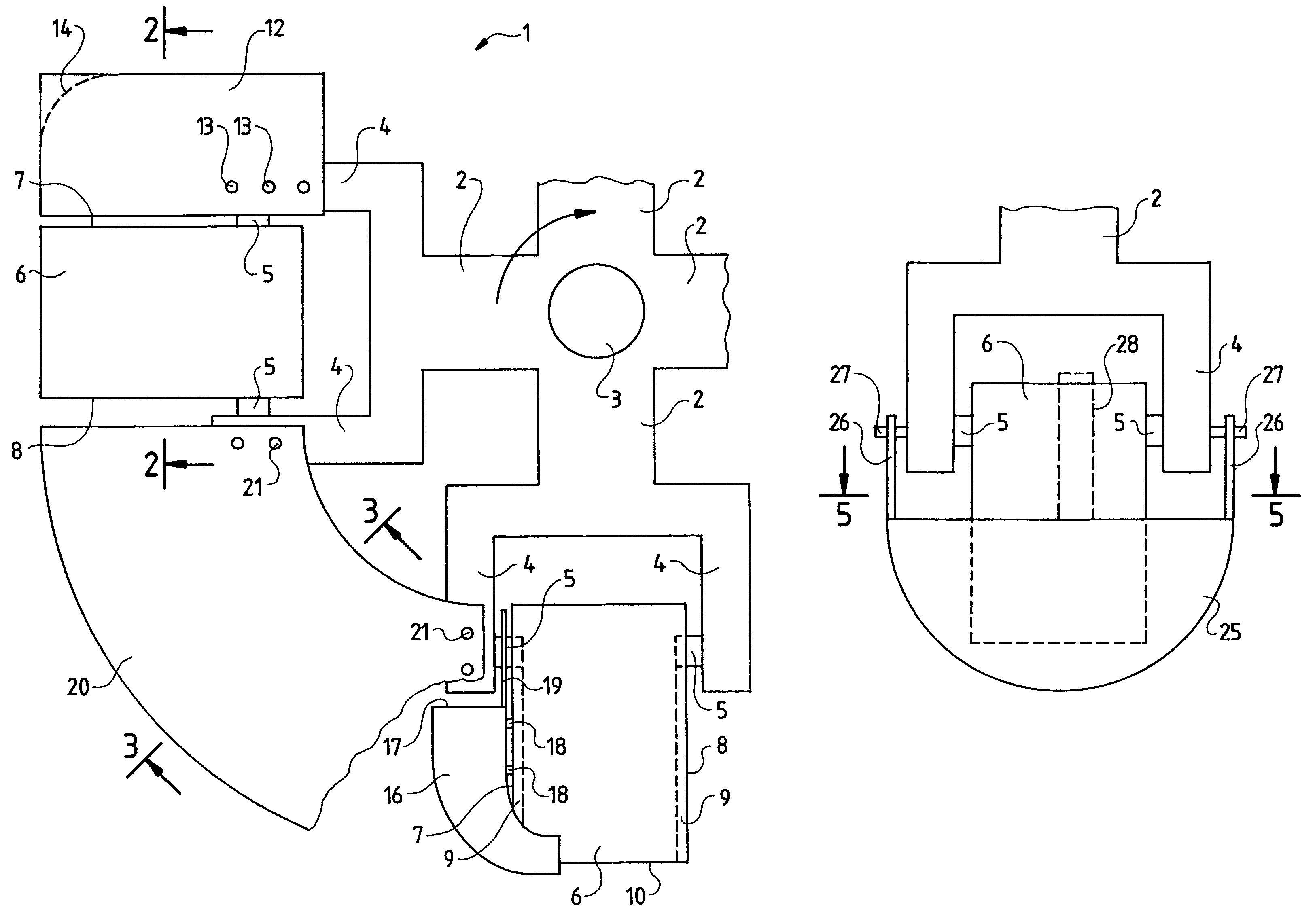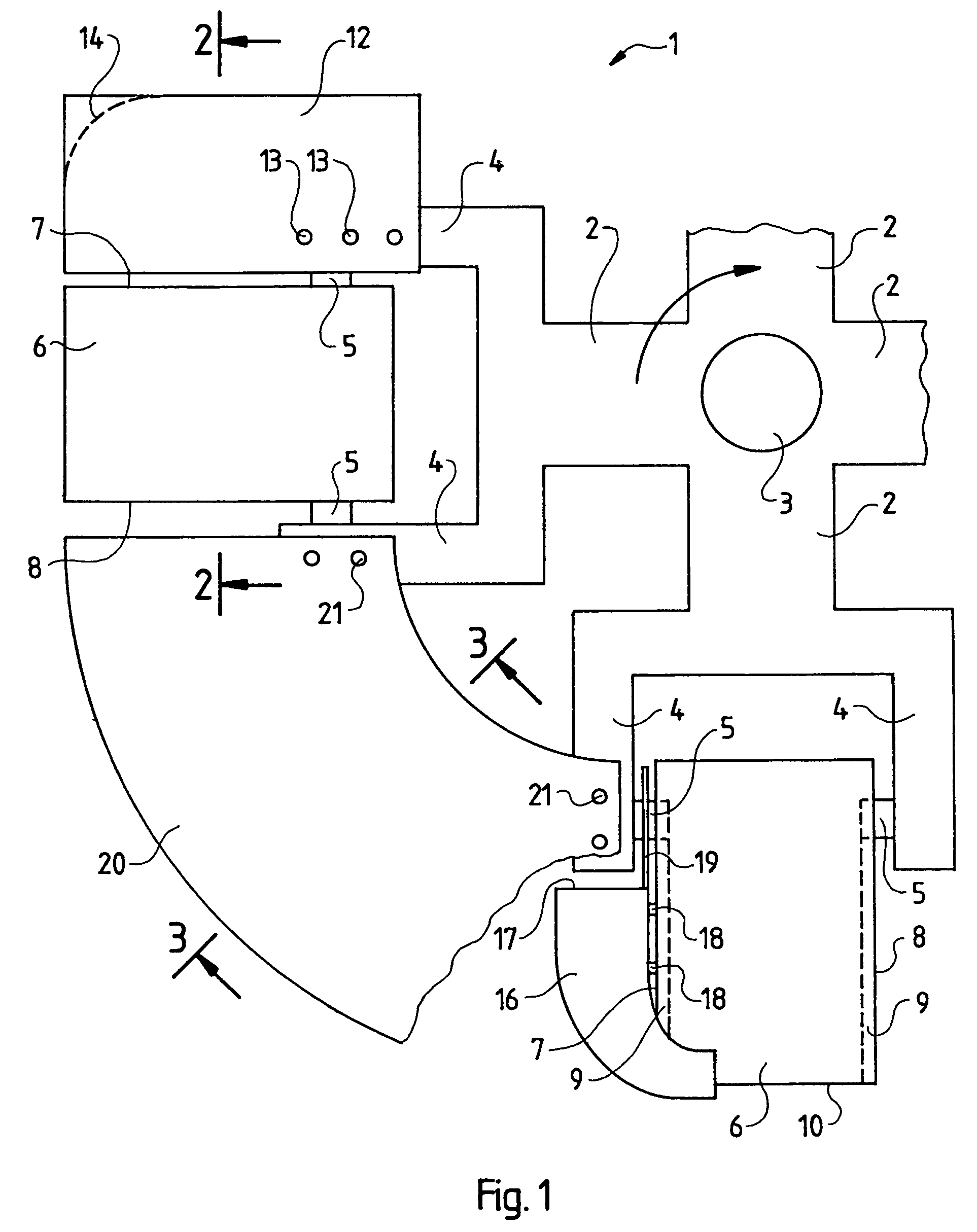Laboratory centrifuge with swing-out containers and aerodynamic cladding
a technology of swing-out containers and centrifuges, which is applied in the direction of centrifuges, instruments, specific gravity measurement, etc., can solve the problems of unrestricted applicability of centrifuges, achieve optimal aerodynamic improvement, reduce centrifugal forces, and reduce air turbulence
- Summary
- Abstract
- Description
- Claims
- Application Information
AI Technical Summary
Benefits of technology
Problems solved by technology
Method used
Image
Examples
Embodiment Construction
[0031]FIG. 1 is a top view of a laboratory centrifuge rotor 1. In this embodiment mode, said rotor comprises four rotor arms 2 and rests on a vertical shaft 3 driven by an omitted motor in the direction of rotation indicated by the arrow. The overall assembly is enclosed by a safety housing which comprises an upper cover element allowing access from above to the rotor as shown in FIG. 1. More information may be found about this design in the initially cited brochure pages.
[0032]The rotor arms 2 change radially outward into fork arms 4 fitted with inwardly projecting pivot pins 5 from which containers 6 can be suspended between the fork arms 4.
[0033]As shown by FIG. 2, the containers 6 of this embodiment mode exhibit a substantially square cross-section and each is fitted as seen in the direction of motion at its front end face and at its rear end face 8 with a longitudinal groove 9 that is open relative to the plane bottom surface 10 of the container 6 and closed in rounded manner a...
PUM
 Login to View More
Login to View More Abstract
Description
Claims
Application Information
 Login to View More
Login to View More - R&D
- Intellectual Property
- Life Sciences
- Materials
- Tech Scout
- Unparalleled Data Quality
- Higher Quality Content
- 60% Fewer Hallucinations
Browse by: Latest US Patents, China's latest patents, Technical Efficacy Thesaurus, Application Domain, Technology Topic, Popular Technical Reports.
© 2025 PatSnap. All rights reserved.Legal|Privacy policy|Modern Slavery Act Transparency Statement|Sitemap|About US| Contact US: help@patsnap.com



